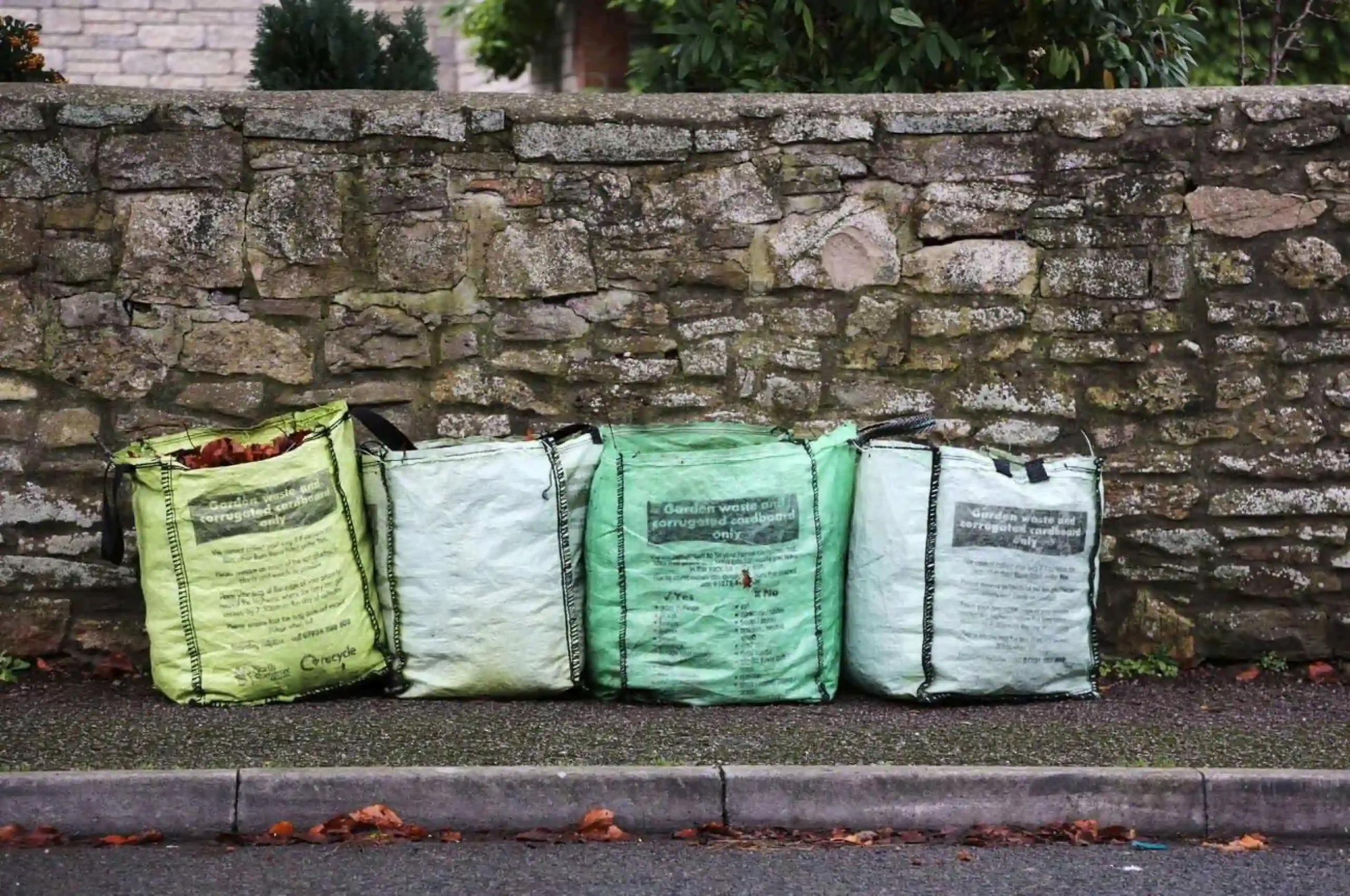Green Waste management has become an increasing focus for industrialized nations in recent decades. As the industry has rapidly advanced, proper waste disposal is no longer optional for the well-being of our environment and all living beings that inhabit it. Yet current practices for dealing with it often result in severe pollution of the environment and health hazards for humans and living beings alike. Planet and power will decode this whole process here.
What is the management of Green waste?
Green Waste management is an integral component of life that plays an essential role. This field encompasses various activities and processes designed to meet our diverse needs and facilitate development, creation, and production processes for many things. Look closely at your surroundings, for instance, the disposal of packaged foods, bottled drinks, and canned food items. What exactly happens after they have been dumped into our garbage cans? Beyond food waste and vegetable scraps from the kitchen, other forms of debris such as newspapers, plastic, cardboard wrappings, and broken objects that no longer serve their intended purposes can also be considered as “waste.”

Table of contents
Types of Waste,
- Solid Waste – Solid waste is generated from different types of activities like construction industries, mining, domestic use, excess wastewater from our homes, and liquid chemical effluents from various industries.
- Liquid Waste – Liquid waste refers to any type of liquid waste, including poisonous gases from various industries. Based on the amount of moisture present in the waste, it is of two types: wet waste and dry waste.
- Gaseous Waste – Gaseous waste refers to all types of gaseous waste, including poisonous gases and gases from various industries. These gases can be classified as hazardous gases, which are highly toxic compounds released from various industries.
Impact on Our Environment
Every day, massive amounts of waste are generated, causing significant impacts on the environment. It’s estimated that 80% of marine pollution comes from land-based sources, primarily through rivers. About 148.9 million metric tons of carbon dioxide equivalent were released into the air by landfills in 2019, making them the third biggest source of methane pollution in the United States. About 22,000 tons of pollution are released each year by open burning in Mumbai. This waste includes plastic products such as water bottles and straws, which take thousands of years to break down. As a result, coastal flooding, human-made climate change, and the negative effects on aquatic life have become prevalent issues. Unfortunately, humans produce far too much waste and struggle to dispose of it sustainably ( Data analysis sources are – National Library of Medicine, Cool geographic )
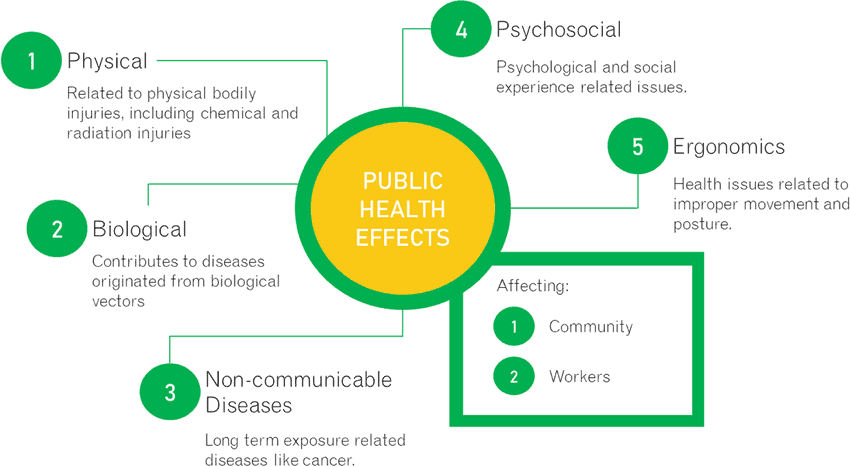
Some major impacts are,
- Soil Contamination – Discarded waste in landfills often releases poisonous toxins that contaminate soil and threaten nearby habitats, endangering plant and animal life as well as soil’s essential function as food production. Restoring poisoned soil requires both money and effort – it is imperative that soil contamination issues are resolved swiftly or irreparable damage could result.
- Air Pollution – Waste collection contributes to air pollution, evidenced by its pungent smell. The release of chemical vapors into the surrounding air from landfills and incinerators, in particular methane gas emissions that warm the Earth’s atmosphere further, create acid rain with harmful consequences for both water cycles and wildlife habitats, contribute to more air pollution overall, and harm ecosystems worldwide.
- Water Contamination – Harmful chemicals and pollutants accumulate near waste disposal plants and eventually end up leaching off into nearby bodies of water, endangering aquatic life in streams, rivers, lakes, and wells or groundwater sources for survival. To protect environmental health and human health, it is very important to keep these sources from polluting.
- Impact on Wildlife – Marine life and rivers are particularly affected by the global waste crisis. Aquatic organisms mistake waste for food, leading them to consume it and die as a result. Many species cannot metabolize plastic particles properly, leading them to starvation and an overall reduction of biodiversity. As a result, their impacts are immense and require urgent protection of fragile ecosystems.
- Public Health – People’s health is also in danger because more and more trash is being made. Having a lot of trash around makes it easy for bacteria, insects, and rodents to grow. It’s important to remember that discarding something doesn’t make it disappear; it often ends up in harmful environments. Recycling plays a vital role in mitigating these negative effects, safeguarding the ecosystem, and preventing contamination and pollution.
The Need for Effective Green Waste Disposal Methods
Recycling, reusing, landfills, combustion/incineration, and composting are all effective means of disposing of waste. Each has its own benefits that help keep the damage to the world to a minimum. We’re still not putting these habits into everyday life, though.
Challenges that are facing the world with the management of Green waste
In 2021, the world generated a staggering 2.2 billion tons of waste. If current trends continue, this figure is projected to nearly double by 2050. It’s clear that the world has a big problem with trash, and we need to fix it right away.
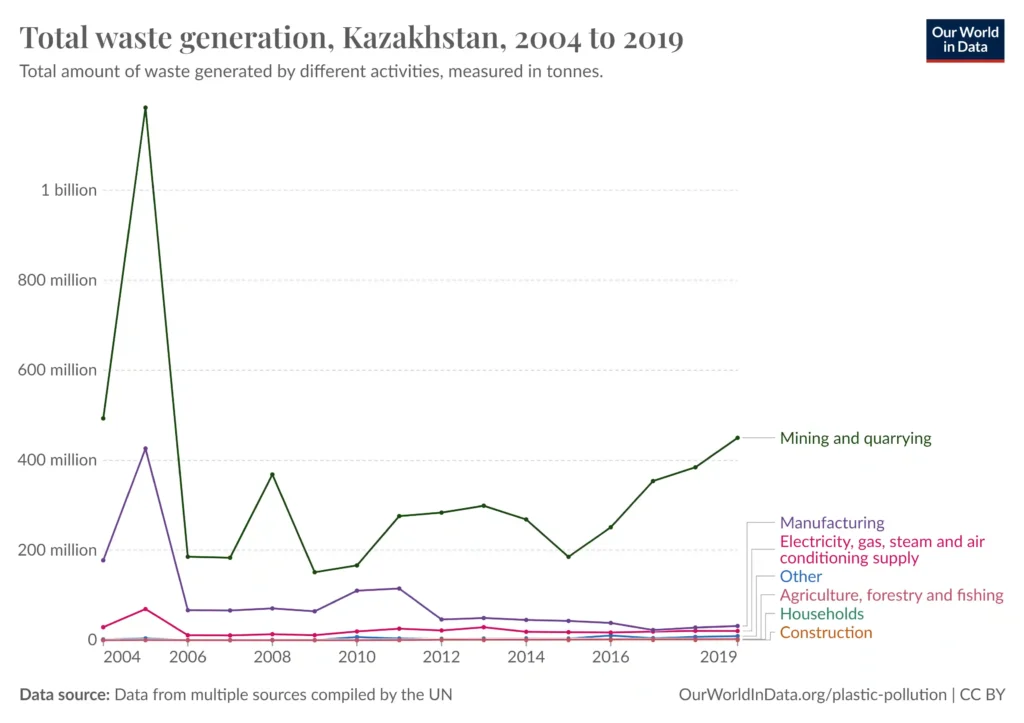
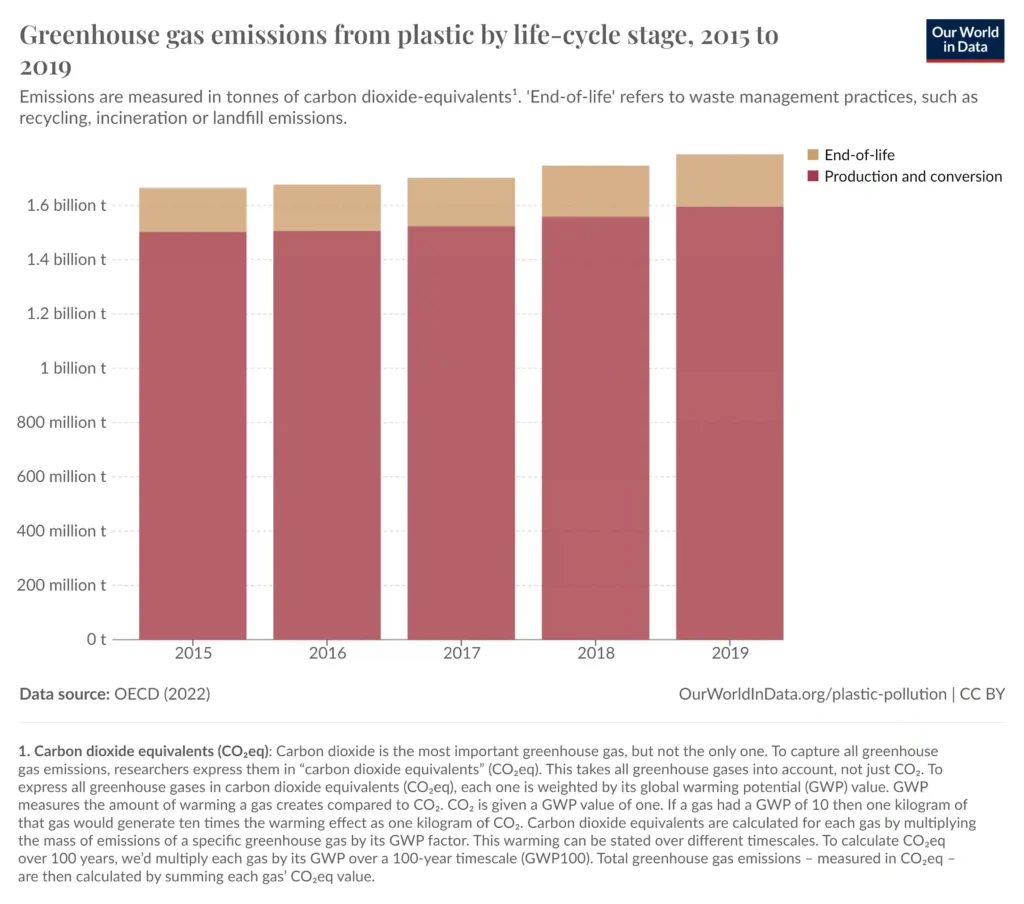
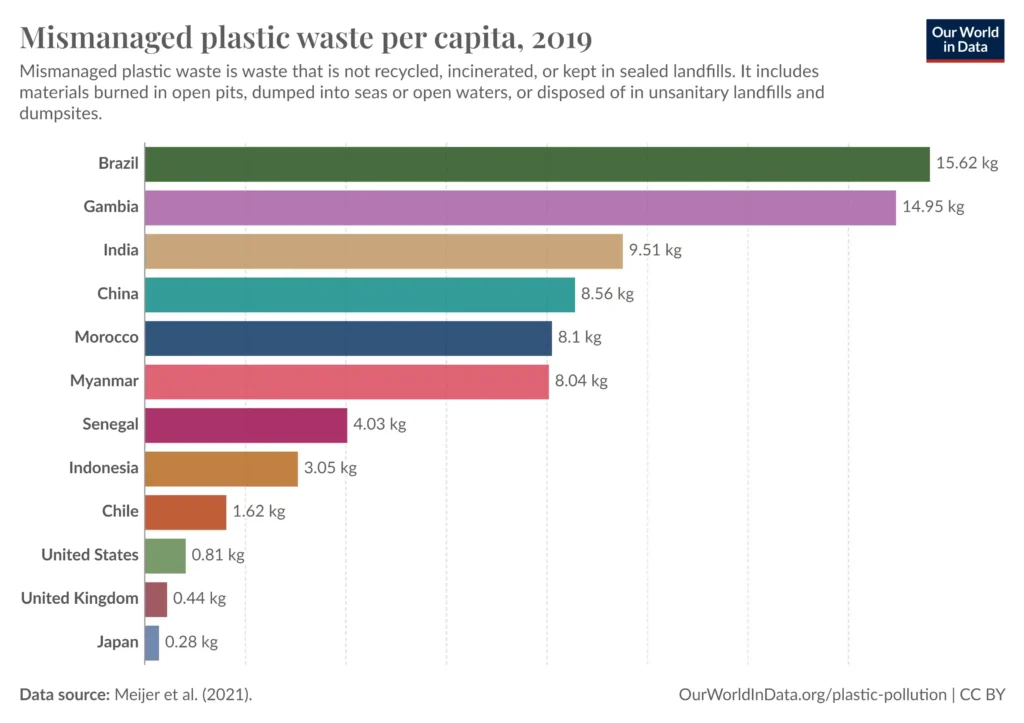
We will experience real-life examples with Lahore, the most historical place in Pakistan that is facing issues with improper waste management – Lahore, one of Pakistan’s most historically, culturally, and economically significant cities is currently suffering a serious environmental and health crisis. Lahore has earned the distinction of one of the world’s most polluted cities over time, suffering from air, water, and solid waste management issues that negatively impact human health. These impacts cannot be ignored. Lahore has already breached the safe levels set forth by the World Health Organization. Heavy traffic, emissions from industrial plants, improper agricultural techniques, and low-quality fuel used during winter are some of the primary contributors to Lahore’s air pollution problem. Harmful particles in the air can increase respiratory illnesses, heart conditions, and even premature deaths. To mitigate this risk, wearing a quality mask on days with high pollution levels may protect individuals against respiratory illness and other potential health concerns. Water pollution in Lahore poses another significant health threat, especially the Ravi River which serves as one of its primary water sources and is heavily polluted with industrial and domestic waste as well as agricultural drainage runoff, endangering both drinking water supply and agricultural irrigation systems. Furthermore, lack of access to clean drinking water compounds this issue by contributing to the spreading of waterborne diseases that further exacerbate this situation.
Lahore’s rapid population growth and inadequate infrastructure have created challenges to solid waste management in the city. Issues such as irregular garbage collection, insufficient recycling facilities, and waste disposal methods lead to environmental pollution and health risks; the accumulation of garbage on streets not only damages its aesthetic appeal but can provide breeding grounds for pests like rats and flies as well as harmful chemicals and microorganisms leaking from garbage piles that contaminate soil and water resources posing further threats to environmental health.
Population growth and infrastructure shortfalls have caused Lahore to face a significant sewage issue, as its existing system cannot keep pace with population needs, leading to seepage into streets, residential areas and even drinking water sources. Furthermore, during rainy seasons when overflow occurs due to overuse by overloaded systems, it poses serious threats to public health while negatively affecting hygiene in general.
Lahore faces numerous environmental and health challenges that require immediate action to address. These problems impact not only local communities but also have global ramifications. To effectively tackle them, comprehensive strategies with sustainable solutions must be put in place. Effective solid waste management practices, water treatment processes, and conservation initiatives are necessary for combatting pollution and protecting city water sources. Promoting cleaner energy sources and improving air quality through emissions reduction can significantly contribute to creating a healthier Lahore. Strengthening infrastructure is also important, to ensure it can handle its growing population as well as address any sewage-related issues in a sustainable way. Achieving a cleaner and healthier Lahore for future generations lies within today’s actions taken now.
What is the Disposal of waste?
Commercial waste disposal – Taking care of and getting rid of garbage that comes from businesses, companies, schools, and other commercial groups is called commercial waste removal. This trash can include things like cardboard, paper, plastic, metal, organic waste, chemicals, and dangerous materials.
Planet and Power always identifies problems and solutions. Whatever the and how big the problem is. Likewise, we will delve into what are the solutions for commercial waste disposal.
Running a business can be hard, to be honest. There’s always something that needs your attention like handling workers or meeting customer wants. One aspect of business management that often goes overlooked is waste disposal. Though not glamorous, waste removal is essential to staying compliant with regulations and avoiding fines that could cripple a company. Taking care of trash by yourself can take a lot of time and be messy. Dealing with rubbish, complying with regulations, and finding an efficient disposal method may quickly become cumbersome – yet thousands of businesses have found a hassle-free solution by outsourcing this task to professional green waste management services. One big benefit is that they give you peace of mind. Outsourcing your green waste management needs to an approved waste management company. It will be thrown away in a way that is safe and good for the environment, so you can rest easy. These firms possess the resources and expertise required to safely dispose of various forms of trash under regulations and environmental standards. By outsourcing your needs for waste disposal, outsourcing can free up time so you can focus on running your business more effectively without needing to arrange one-off collections or make emergency trips to the tip yourself – instead, the green waste management service provider will handle everything efficiently and professionally.
Clinical waste disposal – When healthcare facilities like hospitals, clinics, labs, and medical study facilities make trash, clinical waste removal is the safe and proper way to get rid of it. This kind of trash is often dangerous and can hurt people and the environment if it’s not thrown away properly.
Every day, hospitals, care homes, dentists, laboratories, and various other healthcare providers face the challenge of disposing of potentially infectious, hazardous, or low-level radioactive clinical waste. This process requires specialist handling by professionals with the right experience, expertise, and resources. Grundon, a dedicated clinical waste management service, offers a comprehensive solution to this critical issue. Grundon operates its own industry-leading treatment and disposal facilities, ensuring the highest standards of safety and efficiency. With services like energy-from-waste, steam sterilization, hydroponics, and the UK’s most modern high-temperature incinerator, they provide a range of cutting-edge solutions for clinical waste disposal.
Another 7 Steps of clinical waste disposal by Stericycle are,
Solid waste disposal – The organized gathering, cleaning, removal, and recovery of solid waste products made by people is what solid waste management means. It uses a variety of techniques and plans to deal with trash in a way that is good for the earth and people’s health. According to the World Bank Annually, the world generates 2.01 billion tonnes of municipal solid waste.
Solid waste management is an issue that touches every individual in the world, with improper handling having serious repercussions for our health, environment, and prosperity. Mismanaged waste is polluting oceans worldwide while also clogging drains and leading to flooding. Improper burning practices contribute to spreading diseases, animals may unwittingly consume unmanaged waste which leads to harm or even death for themselves or other creatures. Improper management also has negative ramifications on economic development – particularly within tourism industries. Without immediate action being taken, these issues will only worsen further.
Rapid urbanization, population expansion, and economic development all combine to produce more waste globally than ever before. It is projected that global trash output could rise by 70% within thirty years. At present, over two billion tons of solid trash is produced every year with that figure set to skyrocket if nothing is done to mitigate it soon enough.
East Asia currently creates one-quarter of global trash production, according to data, while sub-Saharan Africa and South Asia see the fastest increase. Over one-third of total world garbage comes from high-income countries with only 16 percent of the population worldwide generating waste.
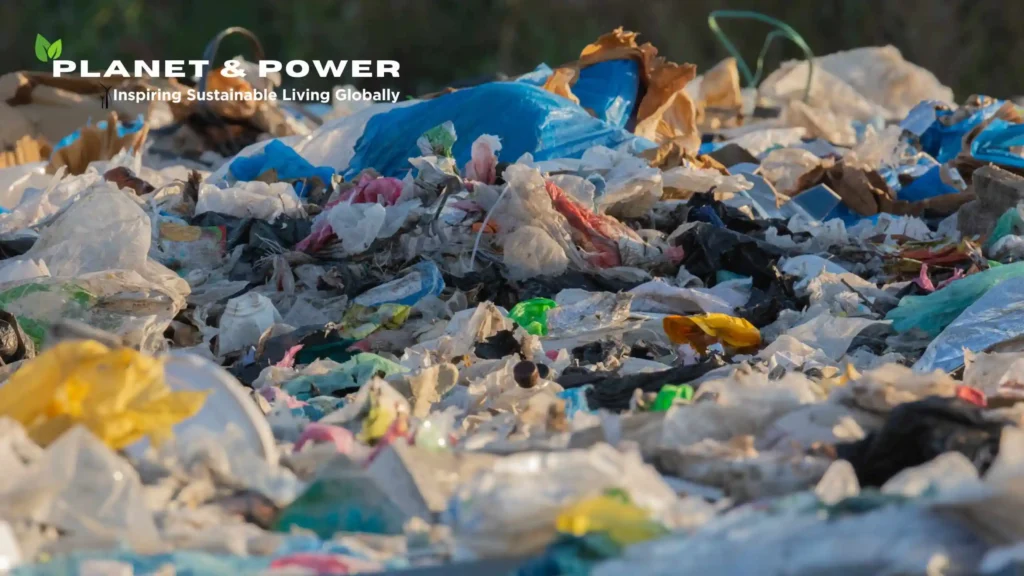
Construction waste disposal – Construction garbage removal includes the steps and processes needed to handle the trash that is created when buildings, roads, bridges, and other infrastructure projects are being built, remodeled, torn down, or dug up. This trash can have many different kinds of things in it, like bricks, concrete, wood, glass, metals, plastics, insulation, asbestos, and more.
India’s tallest skyscraper will be torn down, and the aftereffects will be seen.
Construction trash has a big effect on the earth. Improper disposal can lead to land, air, and water pollution, posing serious health hazards. For instance, landfills receiving construction waste can create water pollution, air pollution, and unpleasant odors affecting nearby communities (According to the National Library of Medicine).
To reduce waste on a construction site, Construction projects typically contain eight major forms of waste. Likewise – overproduction, excess inventory, defects, motion, transportation, overprocessing, waiting, and not using the genius of the team. Leaving these problems alone can cause waste and higher costs if they are not fixed. Unevenness and overburden are two additional wastes commonly seen during construction; unevenness refers to a lack of flow with frequent stops/starts during work processes while overburden occurs when trades/teams become overwhelmed with too many assignments or resources available for completion.
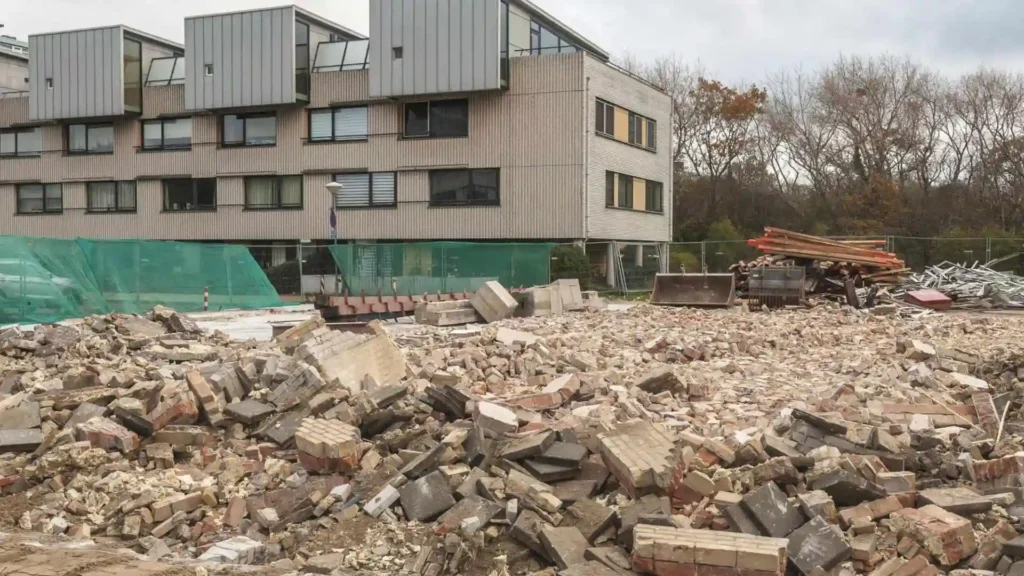
On the other hand, we must also place importance on waste reduction. Reducing waste in construction is essential to increasing productivity, cutting costs, and finishing projects on schedule. By prioritizing waste reduction as an area for improvement on construction sites, construction professionals can create an efficient and productive working environment by eliminating eight specific wastes that hinder construction productivity. Understanding and acknowledging them allows professionals to take steps towards eliminating them to create a more streamlined work environment and increase overall productivity.
The Eight Wastes
The eight major types of waste in construction are:
- Overproduction
- Excess inventory
- Defects
- Motion
- Transportation
- Over-processing
- Waiting
- Not using the genius of the team
These wastes can lead to inefficiency and increased costs if not addressed properly. It’s important for construction professionals to be able to identify these wastes in their work processes.
Electronic waste disposal – The appropriate handling, processing, and recycling of left electronic items, including computers, TVs, mobile phones, and refrigerators, is referred to as electronic waste disposal. These gadgets are made of a range of materials, including dangerous compounds like lead, mercury, and cadmium and precious metals like copper and gold.
When you throw e-waste the environmental impact is significant and multifaceted. Such as,
- Toxic Chemical Release.
- Soil and Water Contamination.
- Resource Depletion.
E-waste, or electronic trash, is becoming a bigger problem in today’s world. With technology’s rapid advancement, more electronic gadgets than ever are being abandoned in landfill sites and contributing to pollution as well as health risks to communities where e-waste accumulates.
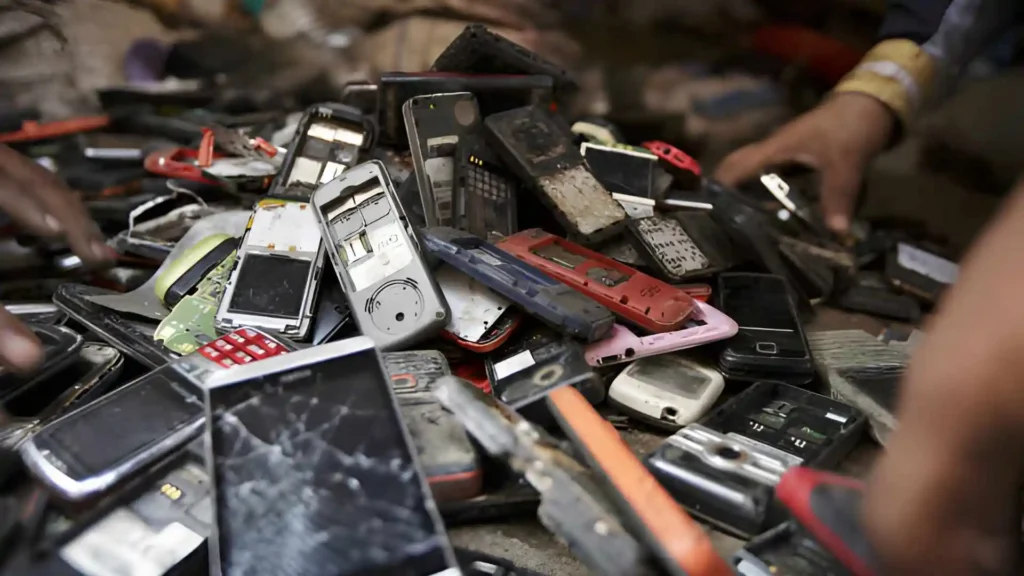
The UN Environment Program says that improper dumping of electronic garbage, or “e-waste,” is a major threat to both health and the environment. As technology keeps getting better, people are throwing away more and more electronic gadgets, which is becoming a bigger problem around the world. The following are the key issues related to electronic waste,
Environmental Impact
When people throw away electronic trash in the wrong way, it pollutes the air, water, and land. Heavy metals and toxic poisons, like lead, mercury, and cadmium, are dumped into the environment, which is bad for the environment and people’s health.
Health Risks
Communities where e-waste accumulates face potential health risks, including respiratory problems, neurological disorders, and developmental issues, due to exposure to hazardous materials.
Resource Depletion
Rare earth elements and precious metals are just two of the expensive materials that are needed to make electronics.
Global Impact
The global impact of electronic waste is far-reaching, affecting not only the environment but also social and economic aspects. Developing countries are often used as dumps for electronic trash, which is bad for the environment and makes social problems worse.
Yard waste disposal – Yard garbage removal is the process of collecting, sorting, and handling organic waste from public, business, and household sites that are outside. This type of trash includes grass clippings, leaves, twigs, wood chips, and other plant matter that is usually created by gardening and planting.
Ever wonder where our yard waste goes? Let’s find out,
Literally yard waste can be stated as a landfill when this type of waste remains in a place for so many times. Landfill sites are a common waste disposal method, but they come with a range of environmental impacts that can have long-lasting effects on the planet. Such as – 1. Greenhouse Gas Emissions 2. Soil and Water Contamination 3. Air Pollution 4. Land Use and Wildlife Impact.
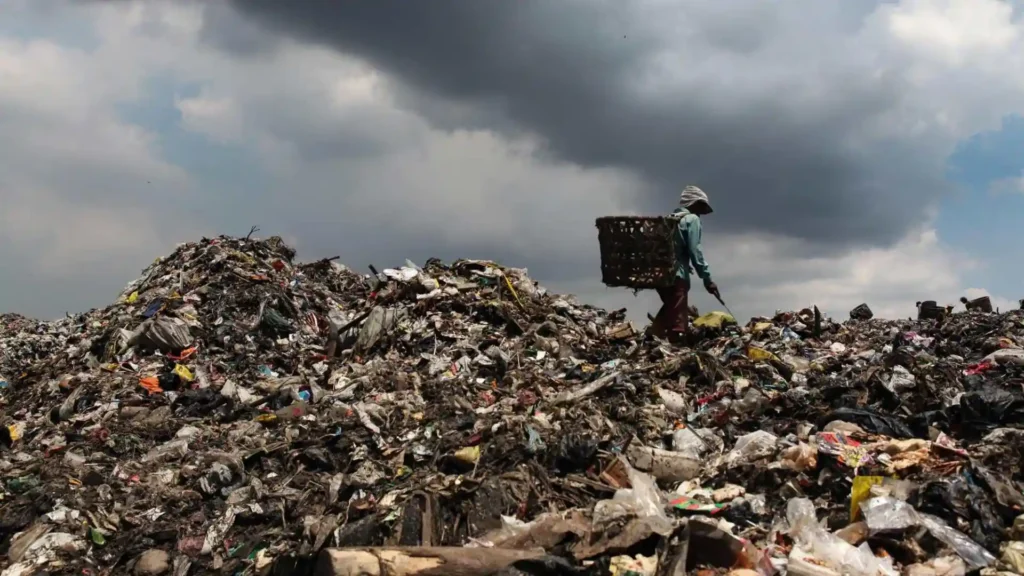
Biohazardous waste disposal – Have you heard that over 400 million tons of waste each year is considered hazardous and burned up, creating hundreds of thousands of tons of CO2 emissions that contribute to environmental pollution? Many common home items are poisonous, acidic, explosive, or flammable, and they are all considered hazardous trash. When improperly discarded, it can have catastrophic environmental consequences. Hazardous waste cannot simply be dumped into landfills as this would pollute both soil and water sources nearby. Even when hazardous materials are burned off in incinerators, polluted air, and water cycles remain potentially hazardous to the environment. Consequently, it is of critical importance to find better solutions for dealing with hazardous waste. Contaminated water known as leachate can permeate through soil layers into groundwater sources affecting both human health and wildlife alike. Furthermore, pollutants from hazardous waste may form new, even more dangerous substances when released into the air, further contributing to environmental degradation.
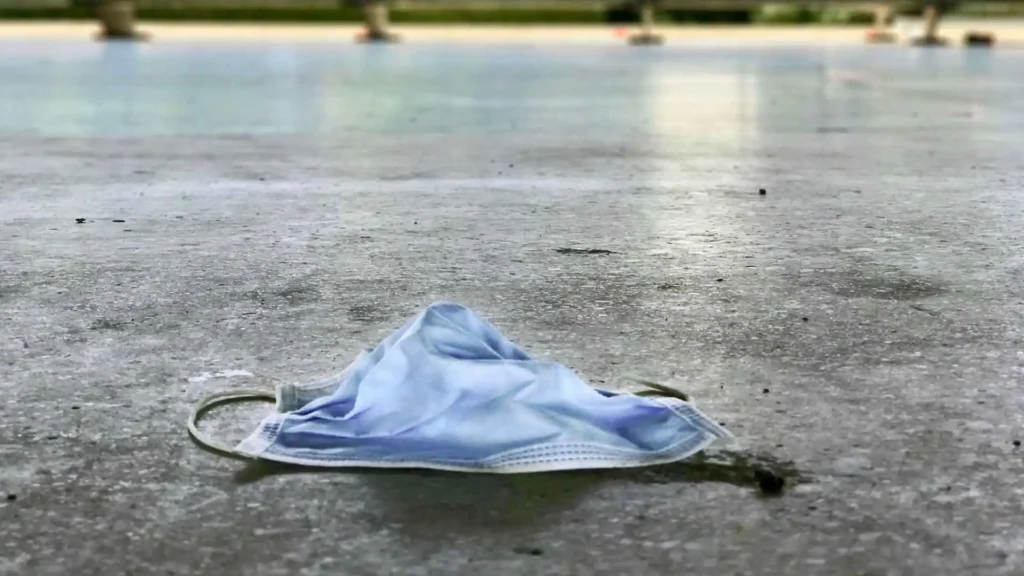
Green waste disposal – Green waste disposal refers to the management of biodegradable waste that comes from garden and park maintenance, such as grass clippings, leaves, branches, and other plant material. There are general insights into the negative impacts of improper green waste management,
- Methane Emissions
- Contribution to Global Warming
- Impact on Climate Change
Pharmaceutical waste disposal AKA Clinical waste disposal – Pharmaceutical trash includes drugs, vaccines, needles, and other connected items that are old, useless, tainted, or not needed. Gloves, masks, and bottles are some of the things that are used to handle these substances. In terms of pharmacy management, this waste can be broken down into two groups: waste from homes and waste from hospitals. When medicine trash is thrown away in the wrong way, it can hurt both people and the earth. To lessen these effects on a world scale, it is important to use good garbage control techniques.
Environmental Consequences, Poor disposal of pharmaceutical waste can have severe ecological repercussions, leading to water, soil, and air contamination and leading to severe ecological consequences. Chemicals from medications may enter ecosystems affecting aquatic life while disrupting natural processes – therefore proper management and disposal practices must be employed in order to limit their release into the environment and mitigate their global ecological footprint.
You Must know about the concerns of public health about it. Pharmaceutical waste can pose substantial health hazards for both human populations and wildlife alike. Improper disposal methods – like flushing them down the toilet or throwing them out with your trash could contaminate water supplies with dangerous contaminants that expose individuals to potentially hazardous materials. Leading to antibiotic resistance or creating long-term health complications that require responsible pharmaceutical waste management in order to safeguard public health globally.
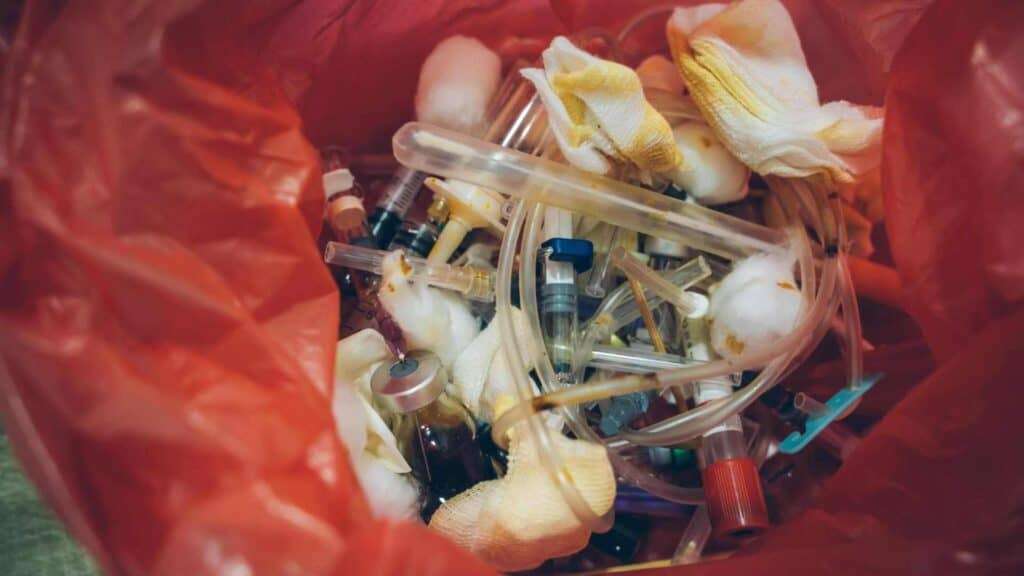
Advancements in technology offer new possibilities for pharmaceutical waste disposal.
Whereas.
- Catalytic Ozonation
- Nanotechnology
Let’s dive into the management of all waste
- County waste management – When it comes to managing waste, the Oxford County Waste Management Facility goes above and beyond. It offers a range of services and resources to ensure that waste is disposed of, recycled, or repurposed in the most efficient and environmentally friendly way possible. See it here,
- Water waste management – Primary wastewater treatment is an integral component of wastewater management and must remove physical impurities as well as solid pollutants from sewage streams. Sewage water passes through grids or vertical bars designed to filter out large objects like cans, paper, and plastic materials from entering. This step ensures any large debris has been eliminated before proceeding to subsequent steps. Sewage flows slowly through a grit chamber, allowing sand, pebbles, and soil particles to settle at its bottom and aiding in the removal of inorganic materials and heavier particles from wastewater. Sewage then flows through a sedimentation tank or “settling tank,” where solid wastes like feces can settle out. Material that settles at the bottom is known as “sludge”, while any floating material is called “scum”. Scum is removed using a skimmer, while sludge is scraped off with a scraper. After primary treatment has concluded, clarified water is the product. While still containing some impurities it has been significantly cleansed of solid pollutants and physical impurities. For further treatment, the secondary process includes an Aeration Tank, Clarifier, and Digester which work in concert.
- E-waste management – Electronic waste has become an increasing burden on society with rapid advances in technology leading to outdated devices being discarded in large volumes and leading to improper recycling and disposal methods that pose environmental and health hazards. Management of electronic waste presents numerous challenges. Each must be overcome to effectively mitigate environmental and health hazards associated with improper recycling methods. Some key obstacles in managing electronic waste include lack of proper recycling infrastructure, and health and environmental hazards due to ineffective recycling. Lack of awareness and education on recycling issues, global e-waste trade challenges; resource depletion issues with policy and regulatory challenges.
- Hazardous waste management – Universal waste is a broad category of hazardous waste generated by both people and businesses alike, typically at lower risk to both people and the environment. Because this form of hazardous waste is so widespread and less stringently managed than its counterparts, however, it should never be dumped directly in trash bins. What is Considered Universal Waste? Universal waste includes items such as,
- Non-empty aerosol cans
- Non-rechargeable and rechargeable batteries (alkaline, lithium-ion, nickel-metal hydride)
- Sodium vapor and neon lamps
- Mercury-containing items like thermostats, thermometers, light switches, and gauges
- Consumer electronic devices (TVs, computers, radios, cell phones)
- Food waste management – Let’s jump into how Canada is managing food waste management in their own way. Check this video –
- City waste management – We will show the example of a brilliant Singapore.
A Guide to Domestic Sewage Treatment Plant in 2024
A sewage treatment plant is an essential facility designed to treat and process wastewater from residential, commercial, and industrial properties before it is safely discharged into the environment. These cleaning plants are very important for keeping the water clean and the environment in the area safe.
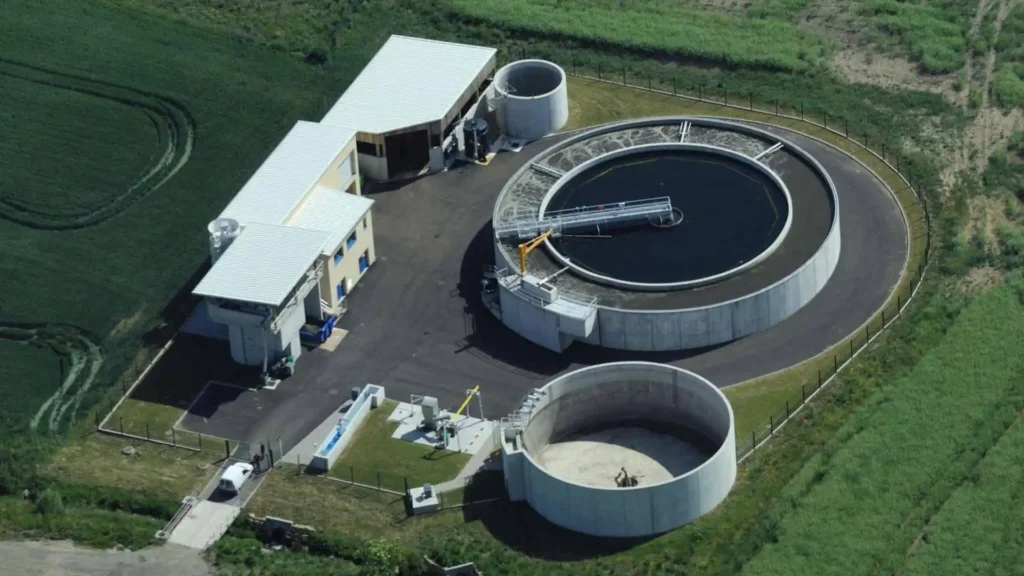
Function of Sewage Treatment Plants
It is the job of sewage treatment plants to get rid of harmful substances in wastewater so that it is safe to release into water or the ground.. The primary functions of these plants include:
- Separating solid and liquid waste
- Breaking down organic matter
- Neutralizing harmful chemicals and pathogens
- Removing debris and pollutants
- Disinfecting the treated water
- Components of Sewage Treatment Plants
Most sewage treatment plants consist of various components that work together to treat wastewater effectively. These components may include:
- Inlet and outlet points
- Primary and secondary chambers
- Treatment tanks or basins
- Aeration systems
- Biological and chemical treatment units
- Discharge systems for treated effluent
Each component plays a specific role in the treatment process, ensuring that wastewater is thoroughly cleansed before it is released back into the environment.
Importance of Sewage Treatment Plants
Sewage treatment plants are vital for maintaining public health, protecting aquatic life, and preserving the quality of water resources. These plants help make the environment cleaner and safer for all living things by getting rid of toxic chemicals and germs from wastewater.
How Sewage Treatment Plants Work
Sewage treatment plants are complex facilities that employ various processes to transform contaminated wastewater into a form that is safe for release into the environment. The following steps are usually part of the treatment process::
- Screening and Primary Treatment – Upon entering the treatment plant, wastewater undergoes a screening process to remove large objects and debris. This is followed by primary treatment, where solid waste is settled and separated from the liquid.
- Biological Treatment – After primary treatment, the liquid waste moves to a biological treatment unit, where naturally occurring bacteria and microorganisms break down organic matter present in the wastewater. This process helps clean the water even more.
- Aeration and Secondary Treatment – The wastewater then enters a secondary treatment chamber equipped with aeration systems. These systems introduce oxygen into the water, promoting the growth of aerobic bacteria that further break down organic compounds and pollutants.
- Filtration and Disinfection – After additional cleaning, the water is filtered to get rid of any solids that are still in it. Then, chemicals or UV light are used to kill dangerous germs and bacteria during cleaning.
- Effluent Discharge – Once the treatment process is complete, the treated effluent is ready for discharge into water bodies or the ground. The plant’s discharge systems ensure that the water is safely released into the environment without posing any risk to public health or the ecosystem.
Sewage treatment plants are very important for keeping water clean and saving the environment from the damaging effects of raw wastewater by using these methods.
As a responsible citizen, it is essential to support and advocate for the proper management and maintenance of sewage treatment plants in your local area. Here are a few actions you can take to promote the effective operation of these facilities –
Stay Informed: Acquaint yourself with the sewage treatment plants in your community and their impact on water quality and environmental conservation. Should any signs of malfunction or pollution related to these systems arise, report them immediately so appropriate actions can be taken swiftly by authorities.
Upgrade Support: Encourage local authorities to invest in modernizing and upgrading sewage treatment plants to meet higher environmental standards while simultaneously improving effluent quality.
Practice Water Conservation at Home: Conserving water at home will decrease the volume of wastewater entering treatment plants, alleviating their burden and encouraging responsible use.
Advocate for Regulation: Promote policies and regulations that encourage responsible operation and maintenance of sewage treatment plants to meet environmental standards.
Artificial Intelligence for Waste Management Recycling
Artificial Intelligence (AI) in the recycling industry is revolutionizing how materials are sorted and processed. As waste production rises, so do efficient recycling methods that use less labor-intensive processes than before. Technology implementation, contamination issues, consumer education requirements, and market demand become key challenges that industry professionals face. AI is very important in this case because it automates jobs that used to take hours of work by hand. As industry professionals adapt, there are still key issues they are confronted with, Labor Shortages, Technology Implementation, Contamination Issues as well and Market Demand among others. As with every industry, it is unique but ultimately it all has one thing in common – its growth can create problems. Some key challenges include Labor Shortages; Technology Implementation issues as well as Market Demand issues among others.
Automation and artificial intelligence (AI) have emerged as powerful forces within the recycling industry to transform it and advance sustainability goals. As demand for efficient recycling methods grows, artificial intelligence (AI) technology is being leveraged to automate tasks that were once laborious and time-consuming. This initiative may provide the industry with solutions for several key obstacles it faces today, including labor shortages, technology implementation challenges, contamination concerns, and market demand issues. Artificial intelligence (AI) is becoming more and more important in the recycling business, and its possible effects are becoming more and more clear. These are some effects.
The End Part
To improve human health, to preserve the environment, and to protect animal and marine life we need to upgrade the whole management of waste process. It is complex and not that easy but to survive we must manage. Long story short as our research shows us One of the essential aspects of waste management is recycling and when you do it, you are helping in conserving natural resources by reusing materials. And also waste management can lead to bigger profits for the company. Companies implement good recycling practices, these can lead to bigger profits by maintaining the efficiency of the supply chain.
We pray for everyone’s longer, healthier, and happy life.
This writing is dedicated to the owners of Planet and Power’s mother who died on March 20 at midnight 2.00 AM.

